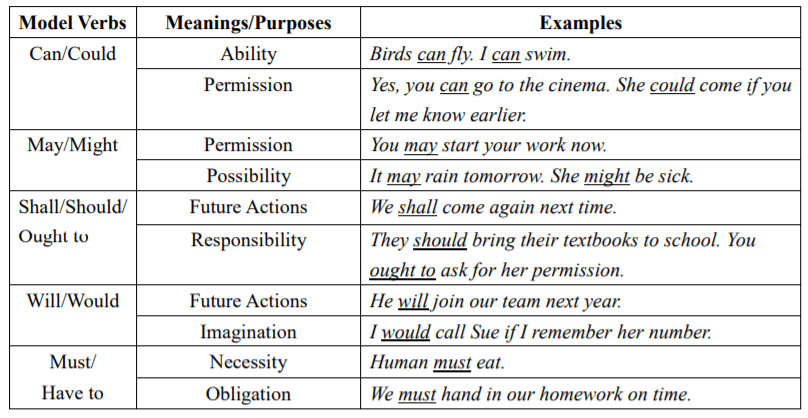Modal verbs are a type of auxiliary verb that express necessity, possibility, ability, or permission. They are used to modify the meaning of the main verb in a sentence. Understanding modal verbs is essential for effective communication in English.
Modal verbs are unique in that they do not have past or future forms. They are always followed by the base form of the main verb. Learning how to use modal verbs correctly can help you express ideas more clearly and accurately.
Modal Verbs List
Here is a list of common modal verbs in English:
- Can
- Could
- May
- Might
- Must
- Shall
- Should
- Will
- Would
Each of these modal verbs has its own unique usage and meaning. Let’s explore some of them in more detail.
Can/Could: These modal verbs are used to express ability, possibility, or permission. “Can” is used in the present tense, while “could” is used in the past or to express a more polite request.
Must: This modal verb is used to express strong necessity or obligation. It implies that something is required or essential.
Should: “Should” is used to give advice, make recommendations, or express obligation. It is often used to indicate what is the right thing to do in a particular situation.
By familiarizing yourself with these modal verbs and their usage, you can enhance your English language skills and improve your ability to communicate effectively.
In conclusion, modal verbs play a crucial role in English grammar and communication. By mastering their usage, you can convey your ideas more clearly and accurately. Practice using modal verbs in different contexts to become more proficient in their application.
